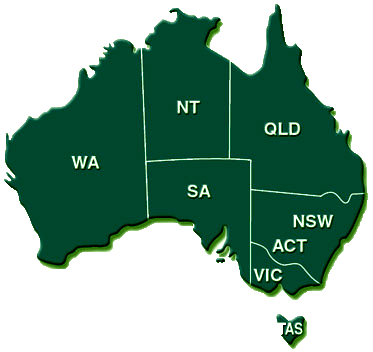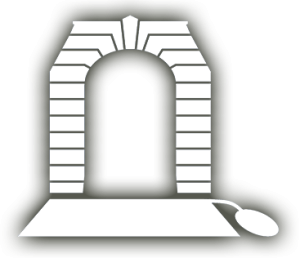Relatives of the Australian servicemen who went missing in action in the Korean War almost 70 years ago are hopeful the mystery of what happened to them could soon be solved.
Authorities in the United States are testing human remains exhumed from a military cemetery in Hawaii, where they were buried without identification after being transferred from North and South Korea in the 1950s and ’60s.
It is the first sign of progress for Australian families on the identifications since Australia and the US signed a memorandum of understanding (MOU) on Korean War remains identification in August 2018.
While experts believe the remains likely belong largely to American servicemen, the families of the 43 Australian servicemen still unaccounted for decades after fighting ended on the Korean peninsula hope the tests will identify their relatives among the buried.
These families have long been calling for the exhumations, and many have provided DNA samples for the tests.
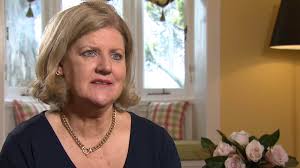
“[The exhumations] are a great source of hope,” says Sydney lawyer Julie Dorrington whose uncle, Royal Australian Air Force pilot Donald Campbell Ellis, was among the first Australian servicemen reported missing in North Korea in December 1950, six months after the start of the Korean War.
Pilot Officer Ellis was just 23 years old when his Mustang plane was shot down east of the North Korean capital Pyongyang. He is not presumed to have survived, and like the other Australians officially recorded as missing in action during the Korean War, his remains have never been found.
“We believe there is a strong chance that some of those who are buried in Hawaii are Australian because, according to Australian Defence Force records, missing Australian servicemen were in some of the areas where the unidentified remains were originally found,” says Dorrington.
The US Defence Department agency that accounts for missing military personnel, known as DPAA, plans to exhume more than 650 sets of remains from the National Memorial Cemetery of the Pacific in Hawaii. The work, paid for by the US government, will happen in stages and is expected to take about six years to complete.
Individual remains have been removed from the cemetery before, but this is the first mass exhumation of so-called “unknowns” at the site atop the extinct volcanic Punchbowl Crater in Honolulu.“WE GET A LOT OF INFORMATION THROUGH DENTAL RESTORATION, BIOLOGICAL PROFILES – HEIGHT, AGE, ANCESTRY – OFTEN WE CAN GET INFORMATION ABOUT CAUSE OF DEATH.”
Exhumed remains are being sent to the DPAA’s Central Identification Laboratory, also in Honolulu, for testing. The laboratory’s director, Dr John Byrd, says many of the remains are well preserved, which bodes well for DNA identification.
Byrd says chemicals used to preserve the bodies on the Korean peninsula decades ago mean scientists now require sophisticated forensic processes to extract DNA data for identification – methods unavailable at the time of burial.
Confirming the identity of missing service personnel conclusively, and the circumstances in which they died, often requires more investigation beyond simply testing DNA.
“We get a lot of information through dental restoration, biological profiles – height, age, ancestry – often we can get information about cause of death such as gunshot wounds or blast trauma,” says Byrd. “Everything is systematically checked against reference samples from Australian families.”
Since October 2018, more than 30 sets of remains have been exhumed from the memorial cemetery. However, Byrd is at pains to temper the hopes of Australian families who believe their loved ones are buried in Hawaii.
“We don’t have any compelling reason to believe any of them are Australian at this point,” he says. “We won’t be surprised to occasionally find South Korean soldiers’ remains among those we are exhuming … Had there been information that suggested they were Australian back in the 1950s they would never have been buried in that cemetery.
“Australians and other allies are possible to find but you can’t point to any grave from the cemetery and say there’s good reason to believe they’re Aussie.”
Byrd says it may be possible to find Australian remains “co-mingled” with other unidentified remains in storage at the DPAA facility, which are already being compared with Australian relatives’ DNA samples on file.
The exhumations in Hawaii stand in contrast to the apparent lack of progress in Australia’s effort to investigate its Korean War missing inside North Korea.
Last year’s Singapore summit between Donald Trump and Kim Jong-un saw North Korea agree to send thousands of remains to the US. For Australia’s part, former foreign minister Julie Bishop offered “expert and forensic assistance” to North Korea after “multiple representations” about investigating Australia’s wartime missing. Almost a year later, the Australian government is yet to make any public confirmation of a breakthrough.
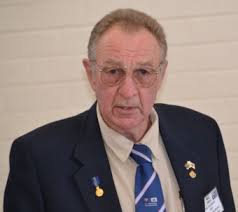
“It’s taken so long to get to where we are today,” says Ian Saunders, OAM, who has spent years advocating Australia focus its search on the suspected Korean War remains located in the US.
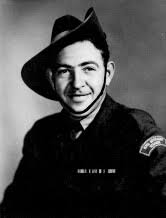
He hopes to find his father, Private John Philip Saunders, who disappeared on the Korean peninsula in January 1953, a day before his 26th birthday, as well as other Australians.
The belief that Australian remains could be found at the Hawaiian cemetery, Saunders says, is based on information from the Australian Korean War diaries in Canberra and what he describes as “documented cogent and circumstantial evidence” in the Australian and US military materials he has researched for the past two decades.
Saunders’ findings have helped determine the last known locations of Australia’s Korean War missing and are being used in official Australian investigations.
In 2015, Saunders received a Medal of the Order of Australia (OAM) for his work lobbying the federal government to boost efforts to locate missing Korean War servicemen, and for his contact with relevant US and South Korean government agencies to investigate their recovery processes.
Saunders questions whether DPAA scientists are using the supplied Australian DNA samples in all identifications.
“We are waiting on confirmation, proof – not a handwritten letter by these people – a spreadsheet that confirms the Australian DNA samples that exist in the Central Identification Laboratory in Hawaii have been compared,” he insists.
The Australian Defence Department won’t say whether it expects remains of missing Australian servicemen to be found during the exhumations.
“Some family members have speculated it is possible that missing Australian soldiers may have been misclassified as US unknown casualties and consequently buried at the National Memorial Cemetery of the Pacific,” a department statement said.
“Defence, in collaboration with the DPAA, have explored every possible route to support or dispel this speculation [including] dental, anthropological, historical and DNA analysis. At this time, no Australian soldier remains have been identified among those analysed by the US.”
The Korean War Missing in Action Working Group – Julie Dorrington and Ian Saunders are both members – connects Defence representatives with veterans’ organisations, relatives of the missing and the Australian Army’s Unrecovered War Casualties unit, which oversees the investigation and recovery of missing Australian service personnel.
The working group initiated and helped draft the MOU between Australia and the US on Korean War remains recovery and identification, which took about six years to complete. Although not legally binding, it encourages more information sharing and formalises existing co-operation.
The DPAA’s Byrd confirms that as a result of the agreement Australian defence authorities can expect to receive previously withheld information about the Hawaii laboratory’s identification work.
“We are very reluctant, if not prohibited, from sharing inside data and information and test results with just anybody,” he says. “The MOU gives us a basis for sharing information – it gives us reason to give authorisation to send information to counterparts in Australia if, for example, we find some compelling test results.
“It tells both sides what is fair use of that information because some of it can be sensitive.”
Saunders suggests the test of the memorandum of understanding’s success will be in the positive identifications of Australian missing servicemen that it facilitates – as happened, he argues, for the US after it signed a similar agreement with South Korea.
Meanwhile, the Australian and US defence departments have agreed to send some of the relatives of Australia’s Korean War missing to visit the DPAA laboratory in Hawaii later this year for a firsthand look at the work being done to identify exhumed remains from the Korean peninsula.
Julie Dorrington hopes to be among them. “There is now a much higher chance of certainty for the missing Australians’ families that we will get the information one way or another. Even if it is a negative result – it is still important to know.”
This article by Kristina Kukolja was first published in the print edition of The Saturday Paper on Apr 27, 2019 as “A path to recovery”. Subscribe here.

